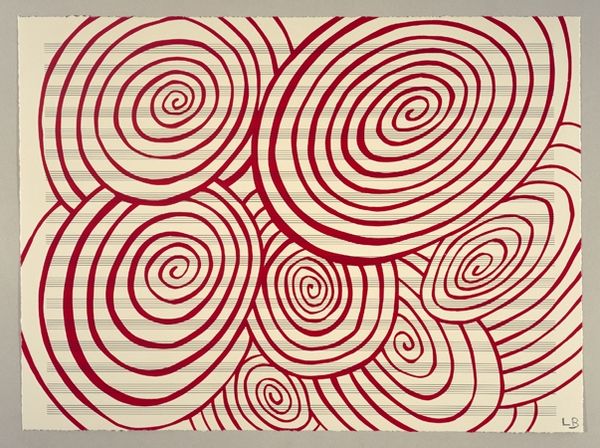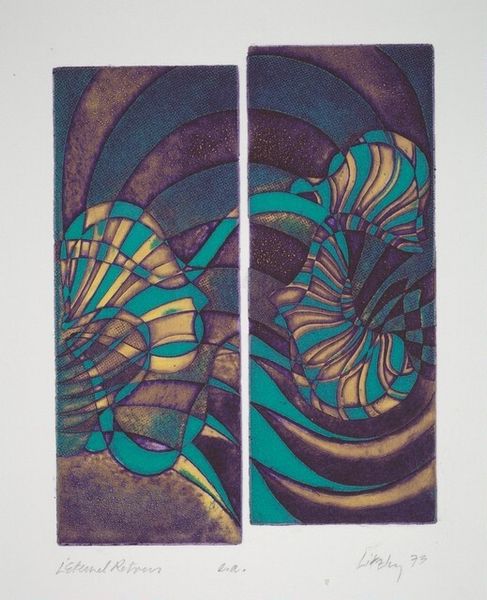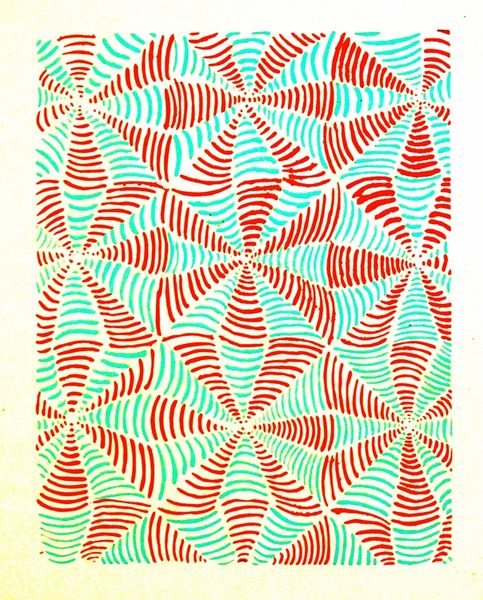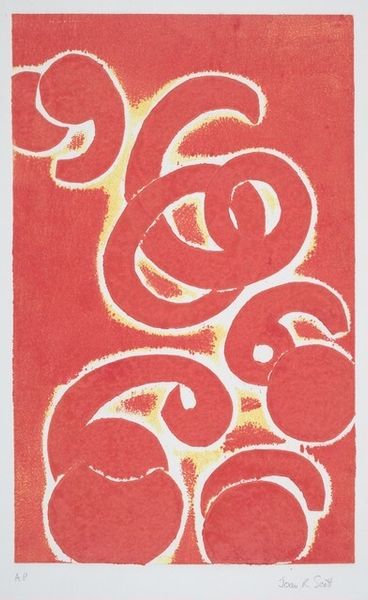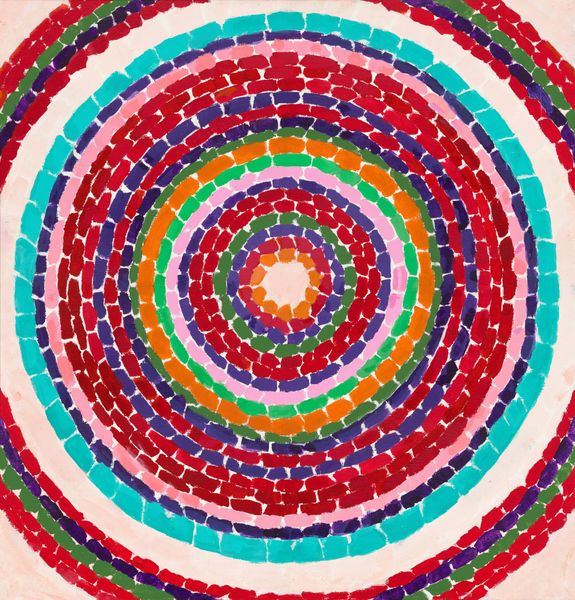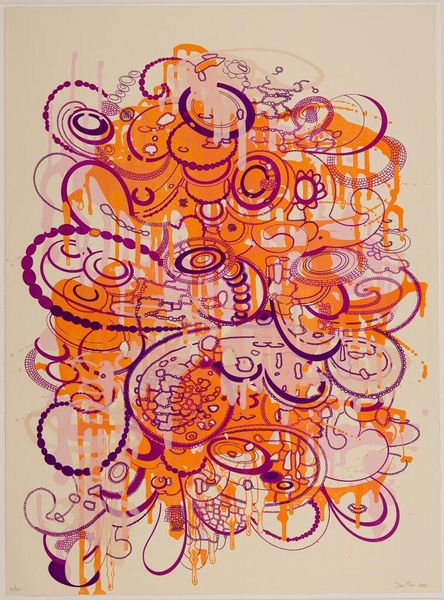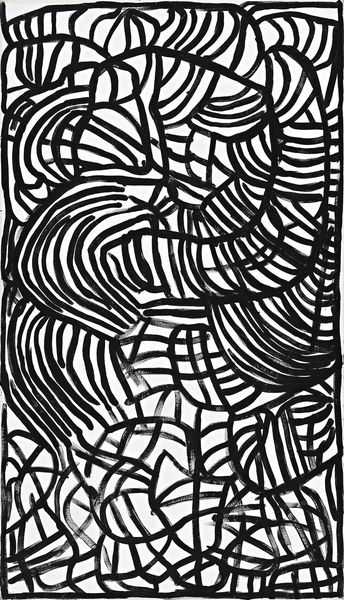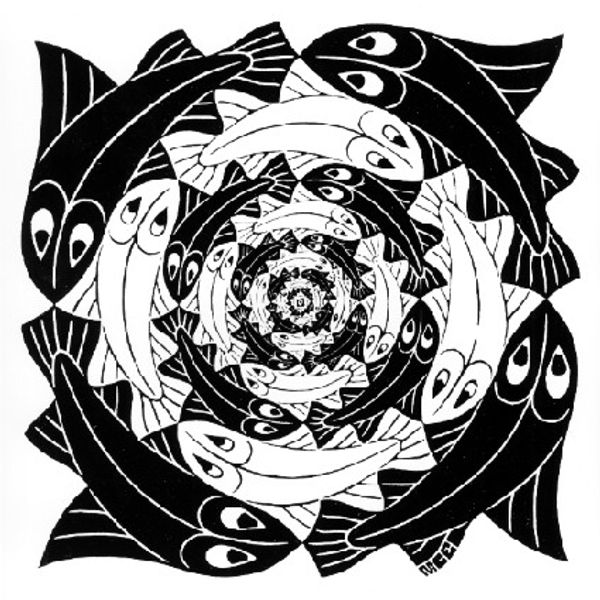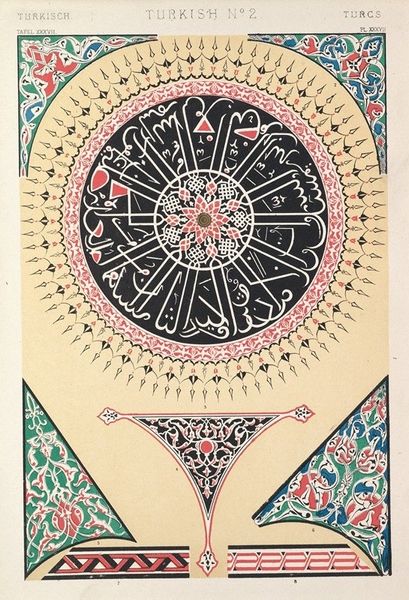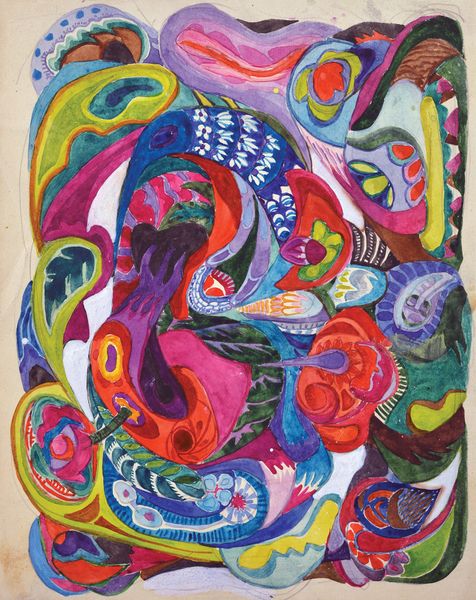
print, linocut
#
organic
#
op-art
# print
#
linocut
#
figuration
#
linocut print
#
organic pattern
#
geometric
#
geometric-abstraction
#
pattern repetition
#
modernism
Copyright: National Gallery of Art: CC0 1.0
Editor: Here we have M.C. Escher's "Whirlpools," created in 1957, a linocut print that's incredibly mesmerizing! The repeating fish create these dizzying spiral patterns... it almost feels like they're swimming right off the page. What strikes you most about it? Curator: Considering this work from a materialist perspective, the linocut technique itself is central. Think about the labor involved in meticulously carving the linoleum block to create this pattern. The sharp precision required, the repetitive motions... Editor: It must have taken so long! Curator: Exactly! And what does this meticulous process tell us about the value we place on craftsmanship versus mass production in art? Escher blurred those lines. This wasn’t painting with spontaneous gestures, it's a printed multiple, democratizing access, in a sense. Where does “high art” end and skilled production begin? Do you think the relatively accessible nature of printmaking affected how it was received at the time, perhaps influencing some to view it as less significant than painting, for instance? Editor: I never thought about it like that. I was just caught up in the illusion. Curator: The illusion IS captivating, of course! But think, also, about the cultural context. This was made during a period obsessed with geometry and science. Is Escher celebrating progress or subtly critiquing how rational thought contains organic nature within rigid intellectual models? Perhaps the whirlpools, beautiful as they are, are also somewhat suffocating. Editor: Wow, I came in just thinking, "cool optical illusion," but now I’m considering the physical effort, the economic factors, and even a critique of society embedded in the piece! Curator: Precisely. The materials and the means of their manipulation always hold a wealth of meaning.
Comments
No comments
Be the first to comment and join the conversation on the ultimate creative platform.

